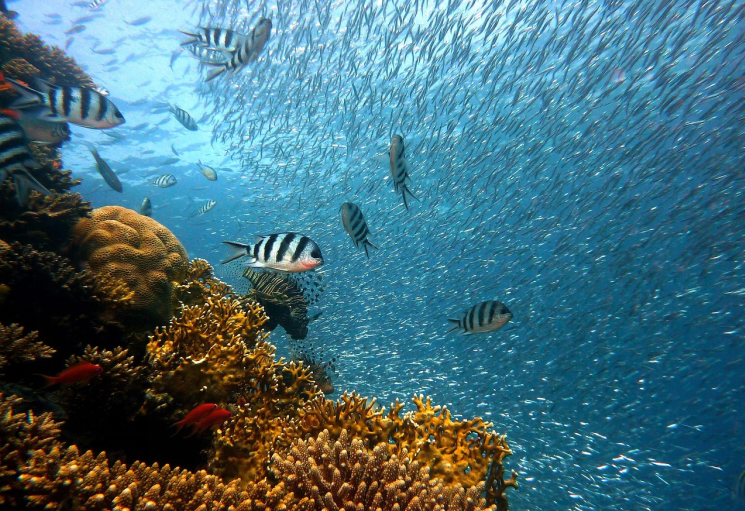
Trekkers of the Everest Base Camp Trek make many memories that are recovering from a long stroll of feeling tired after climbing Mount Everest. Nullable! The Everest Base Camp trek is in many respects a challenging trekking journey that is more suitable for more experienced trekkers with a penchant for outdoor exploration and adventure. In the past, the trek was primarily undertaken by trekkers looking for a peaceful experience in the Himalayas, away from the crowded trails. So that brings us to the question: Is the Everest Base Camp trek family-friendly?
The answer varies based on a number of factors, such as the physical abilities of the family members, the ages of the children, and the experience you’re hoping for. The trek itself, although not as technical as summiting Mount Everest, requires several days of strenuous hiking at high altitudes and can prove to be too much for very young children or older members of the family. The trek is best for families with a high level of fitness and health — walking at altitudes above 5,000 meters (16,404 feet) takes a toll on the body.
Families have successfully trekked to Everest Base Camp with children as young as 10, but in this case, it’s important to consider whether or not your kids are physically ready to hike for several hours each day. The hike includes rough ground, long uphill stretches, and steep downhills at times. Walking days are physically challenging with 5 – 8 hours of trekking on average. The pace can be slowed down for younger trekkers, but it is still a serious commitment. The secret to keeping it fun and safe for everyone in your household is to acclimate slowly, pace yourself, and take lots of breaks.
Acclimatization is one more very crucial factor when trekking at high however. The trek to Everest Base Camp takes hikers through villages such as Namche Bazaar and Dingboche, where they can rest and acclimatize to thinning air. Children may also be more prone to altitude sickness considering their smaller size and growing bodies, so it’s vital to watch their health closely during the trip. Parents should also make sure everybody remains well-hydrated, eats healthy meals, and spends enough time adjusting to the weather and environment. If you notice any family members start to show signs of altitude sickness, such as headaches, dizziness, or nausea, it’s important to halt immediately and descend to a lower altitude.
Everest Base Camp Trek Itinerary 15 Days Infrastructure along the route is another consideration for bringing the family on this trek. Fortunately, the trek to Everest Base Camp is well-traveled with a series of tea houses providing basic accommodation and food. These tea houses are clean enough to feel comfortable for families, and safe enough to get at least sheltered in for each evening. Note, though, the facilities are basic and families should be prepared for dorm-style communal areas, and simple sleeping arrangements, and limited opportunities to enjoy hot showers. Since temperatures drop sharply at greater heights, it is important to pack suitable sleeping bags and warm clothes. The digs may not be fancy, but they are adequate for families familiar with adventures in the wilderness.
The Everest Base Camp trek is regarded as relatively safe, particularly when trekkers seek to follow certain practices regarding acclimatization and hydration. Guides and porters, who know the trail, are invaluable in keeping the family safe. A professional guide can help navigate the route, manage altitude-related risks, and provide assistance if any health problems arise. Additionally, the majority of trekking companies have group tours, which means you will travel with other sane trekkers who can support you in your journey and offer camaraderie along the way.
Sure, the trek can be physically grueling, but for families willing to take on such a challenge, there are plenty of rewards. The euphorically shared achievement of our arrival at Everest Base Camp, amidst awe-inspiring views of the world’s tallest mountain, is a primal and profound experience. Aid track gives all families a perfect chance to bond with each other through the feeling of satisfaction and joy of walking over new altitudes or the beauty of the biggest mountain range i.e. Himalayas. Along the way families would interact with Sherpas and experience the rich culture and traditions of the region, the trek is a truly immersive cultural adventure.
Summary Everest Base Camp trek is family-friendly, if you tread with caution. Families should also be in shape and able to manage the rigors of the trek, especially the altitude and days of long hikes. Parents should also consider their children’s health and the need to acclimatize, adjusting the pace and itinerary as required. A well-planned trek can be a tremendously rewarding experience for a family, bringing memories you will cherish for the rest of your lives, with a bond to nature and the Himalayas. The trick is to take it slow, drink so much water, sleep whenever, and enjoy the ride along the way.
What is the Everest Base Camp Trek?
One of the world’s most famous hiking trails, the Everest Base Camp trek tends to draw adventurers from across the globe. It takes trekkers to the base of Mount Everest, the highest mountain on Earth, at an altitude of 5,364 meters (17,598 feet). The trek begins in the vibrant city of Kathmandu and takes you through picturesque Sherpa villages, Buddhist monasteries, and verdant forests with stunning vistas of the Himalayan range. Where that route is mostly a hike, however, it has its own demands — and challenges — in terms of altitude, rough ground, and long trekking days. The hike typically takes about 12-14 days, depending on the route, and offers trekkers a close-up view of Everest itself, as well as other famed peaks like Lhotse and Makalu. It is well-traveled by those who wish to experience adventure, scenic beauty, and cultural encounters in the land of the Himalayas. It may be a rigorous hike, but with the right planning and pacing, the Everest Base Camp trek can offer a life-changing experience for people of all backgrounds and fitness levels!
Everest Base Camp Trek for Family — Is it possible?
Everest Base Camp Trek Cost Though the Everest Base Camp trek is becoming a popular outdoor activity for families, you should still evaluate whether or not it’s the right fit for your family’s individual needs. The hike is strenuous, especially in the physical effort and altitude aspects, but can be family-friendly with precaution and planning. When: Late March to mid-DecemberDifficulty: Difficult; steep climbs, rough paths, and long trekking days can be too much for young kids or kids who aren’t used to getting outdoors. But the trial has been done by families with children as young as 10, as long as they’ve trained physically for it. The trick to a family-friendly trek is pacing. Your itinerary should allow acclimatization and rest days which are extremely important in order to avoid altitude sickness. And a guide can ensure a safe trek; plus, a team makes it much easier. Finding a kindred spirit, a sense of adventure, a seat on a plane, or a deeper connection with the world around can often be felt at the feet of a Giant as many families then turn to Mt. For those that share the spirit of adventure, sense of camaraderie and accomplishment, the opportunity to immerse oneself in the local culture and nature may very well lead to a rewarding family experience.
The Text-Trek: Who is Old Enough to Make Trek?
Age is an essential factor in considering the feasibility of an Everest Base Camp trek for your family. Trekking companies typically recommend that kids 10 and up can do the trek as long as they are in good shape. Younger children may not have the stamina or, in the case of the trek, the physical capabilities for the itinerary, as the altitude and the long days of hiking combine to put pressure on them physically. For teenagers, the journey can be a unique and meaningful experience, particularly because they can manage the physical challenge and comprehend the significance of the trek. It is also achievable for older adults, but participants must be in good shape and think about issues like endurance, joint health, and acclimatization. You should take into account the fitness level and wellbeing of trekkers of any age, and make sure trek pace is appropriate. In the end, age is no absolute obstacle, but physical preparation and mental strength are essential to making the journey a good one. Families should be ready to change plans on the fly, and all should be prepared for the challenge, as altitude and terrain can be a challenging at any age.
Families of Physical Fitness Requirements
When it comes to the Everest Base Camp trek, physical fitness is an important consideration for families. The trek will require hours of hiking each day, over varied and sometimes steep terrain. While the trek doesn’t involve mountaineering skills, it requires a reasonable degree of fitness to cope with the altitude and physical exertion. Families must evaluate their general fitness levels prior to undertaking the transition. For adults, cardiorespiratory fitness is crucial. Build the necessary stamina: Regular aerobic exercises such as hiking, cycling, or running are helpful in building the necessary stamina. Leg strength is also important, because you’ll be climbing uphill during the trek so exercises such as squats and lunges will help. Children, especially, should be used to hiking for long stretches with a pack, and parents should make sure kids are comfortable walking for many hours at a time, at a relatively consistent pace. You train to be fit overall and light on your feet so that you can go slowly but surely all day on the trek. To prepare for some of its more spectacular phases, families should work their way up toward longer hikes, and practice conditions akin to the Everest Base Camp trek: some camping and relatively simple trails, making the experience pleasurable, and doing it in manageable portions. Training regularly in the weeks before the trek will greatly improve the odds of the trek being successful while also lessening the chances of injury and fatigue on the trail.
Right Time to Go For a Short Trek With Your Family
Choosing What Season to Trek Everest Base Camp with Family The pre-monsoon (spring) season, which lasts from March to May, is the best time to trek, followed by the post-monsoon (autumn) season, which lasts from late September to November. The weather during these months is usually clear, offering the best views of the Himalayas and more stable trekking conditions. These seasons present the optimal temperature and weather conditions, typically experiencing daytime conditions that are mild to cold but generally manageable. However, the summer monsoon (June-August) and winter months (December-February) are not the perfect time to trek. The monsoon season saturates the area with large amounts of rain, making trails muddy and inundated and making navigating towards Everest Base Camp difficult. During winter, temperatures will drop significantly, and the conditions can be harsh and potentially dangerous for families, especially those with younger or older members. When deciding the best time, be sure to keep not only the weather but your family’s napping schedules in mind. Spring and fall offer the best chance of good weather, reasonable temperatures, and a sensible number of trekkers, meaning your family is more likely to have a safe and pleasing experience.
Guide Support: Safety and Other Ways to Assist Families
This is where guides become an important aspect of both the safety and success of the adventure, especially for families. Hiking at high altitudes and in challenging landscapes poses several risks, and an experienced guide will help minimize the risks, as well as provide peace of mind. Guides are trained in first aid, and are experienced in spotting altitude sickness or other potential health problems. For families, guides can tailor the trek’s pace to the health and energy levels of individual family members, making sure that everyone is acclimatizing properly and staying safe. Guides also handle logistical tasks, including navigating the trail, arranging accommodations, and facilitating communication with local tea houses and medical centers in the event of something like altitude sickness. On a trek with a support team of porters and guides, there will always be someone to turn to for help if needed, especially in an emergency. Families will have a group of people who know the lay of the land, the risks that they may face, and how to deal with medical issues. Further, the presence of a guide can enrich the experience by offering insights into local culture and customs, as well as the history behind the sights, enhancing the overall experience and making the trek a more memorable one for families.
Children and Elderly Family Members may have Altitude Concerns
Everest Base Camp Trek Itinerary Altitude sickness is perhaps the biggest health risk when trekking to Everest Base Camp, and children and elderly relatives tend to be the most susceptible. When the trail climbs over 5,000 meters (16,404 feet), the air thins out more and the oxygen level drops, making breathing more difficult. Their smaller size and developing bodies can render children more vulnerable to altitude sickness, which is often characterized by headaches, dizziness, nausea, or fatigue. Older trekkers, for example, may find their bodies acclimatize more slowly with a higher risk of complications, especially if they are already dealing with underlying health issues such as heart or respiratory disease. To reduce the risk, the key is gradual acclimatization. Rest days, like stopping in villages like Namche Bazaar and Dingboche, allow the body to adjust. Drinking plenty of fluids, eating healthfully, and steering clear of alcohol are also key. Parents should closely monitor their children’s health and ensure that they have built up physically for the altitude. If you experience any symptoms of altitude sickness, it’s crucial to move immediately to a lower elevation and obtain medical assistance, if required. The most important for families is to prioritize acclimatization and not rush the trip so that everyone can handle high altitude easily.
Accommodation & food along the route
The accommodation along the trek to Exclusive Everest Base Camp, is basic but comfortable so it is possible for families. The majority of trekkers stay in traditional tea houses, and family-run lodges offering basic services. These tea houses deliver warm sleeping quarters, meals (a rare commodity on the trail), and, occasionally, common areas for relaxation and socialization. Rooms tend to be small, with shared baths, and families might need to share sleeping space. These camps are rudimentary but provide the required comfort for the hike. Conditions get more basic at higher altitudes, with fewer amenities and colder, so you need to have a good sleeping bag, warm clothes, and so on.”
The tea houses offer a wide range of international and local dishes. The meals are usually simple but hearty, options include dal Bhat (lentil soup with rice), noodles, vegetable stews, and potatoes. For families, this is a good option for refueling after a day of hiking. And even though the meals are meant to be nutritious and energy-boosting, one thing you really want to make sure of is that the children and elderly in your family are eating enough and drinking enough fluids so that they don’t become dehydrated. Fresh fruit is scarce, and meat can become less available in high altitudes. As a result, bringing energy bars and other dried fruits can be a great way to supplement meals for the road, so to speak.
Family Passions and Experiences on the Trek
Everest Base Camp Trek Package There are a variety of adventures that can bring your family together, learning, and exploring on the Everest Base Camp trek. Besides the physical challenge, the process also includes introducing local culture and history but also beautiful vistas of the Himalayas. Families can explore Sherpa villages and meet local people, and visit Buddhist monasteries, such as the famous Tengboche Monastery, where trekkers can observe traditional prayer ceremonies. Children will be awestruck by yaks and mules transporting supplies along the way, and the breathtaking vistas of Mount Everest, Lhotse, and Makalu will stay in their minds forever. You can learn about the Sherpa culture and visit the local markets in villages such as Namche Bazaar. Shvartsman said families can also participate in gentle hikes around these villages, which are a great way to get blood flowing and acclimatize. Shorter hikes to viewpoints, such as Kala Patthar, reward trekkers with panoramic views of the Himalayas, making memories for everyone. It can also be an educational expedition, educating trekkers on the unique flora and fauna or the area’s history and, therefore, a fulfilling cultural/natural adventure for families.
What to Bring on a Family Trek to Everest Base Camp
So, if you are planning your family trek to Everest Base Camp, you must know how to pack for it, as you have to take care of the comfort, safety, and warmth for the journey. The clothes are the most basic part of your packing list, with huge differences in temperatures, from warm days to freezing nights. Layering is your best friend: Bring along moisture-wicking base layers, an insulating mid-layer (fleece is a great option), and a waterproof, windproof outer layer. Colder nights and higher altitudes require warmer hats, gloves, and, of course, a scarf or buffs.
Footwear is equally important — sturdy hiking boots that fit well and have good ankle support are key. We’ll also be focusing on comfort socks like moisture-wicking and blister-prevention socks. On cold nights, particularly at altitude, used sub-zero-rated sleeping bags.
In food, things like energy bars, trail mix, and dried fruits can help supplement meals given along the trek. Other necessities include water purification tablets, headlamps, and first aid kits. For families, pack additional medications for children or senior family members, and sun protection (sunscreen, sunglasses, hats). Backpacks can be lightweight but large enough to carry necessities for each day. Finally, don’t forget camera gear to document your experience, and trekking poles, for support on the rocky, uneven paths.
Some Common Challenges Families Might Encounter on the Trek
EBC Trek Although the Everest Base Camp trek is a bucket-list experience, it is not without its challenges, particularly for families. The mindset in place at the heart of it is one of the main challenges, but one of the other big obstacles is that it is a physical challenge, that is hours and hours of walking on steep and rocky ground. Children and elderly trekkers may find daily distance and elevation gain challenging, and for younger children or people with respiratory issues, it can be hard to adjust to the high altitude. In addition, without proper acclimatization and pacing, it is easy to become exhausted and suffer from altitude sickness.
The weather is also unpredictable, particularly high up in the mountains where temperatures can plummet at night. Families need to be ready for the cold and potential snowfall or rain, if the monsoons bring them. Health issues, such as dehydration, gastrointestinal problems, and altitude sickness, are common and need to be monitored closely. Moreover, logistical issues like basic lodging, communally shared areas, and lack of conveniences might impact comfort, particularly for families unaccustomed to austere conditions.
The other challenge is the mental and emotional draining that the physical strain brings with it too. Children might be bored with days of hiking, and parents might have trouble managing the need to keep everyone safe and smiling. Clear communication with your partner or family, real really lowering expectations, and taking regular breaks can help reduce stress and make the journey more manageable.
Final Thoughts: Is the Everest Base Camp Trek Family Friendly?
An exhilarating and challenging adventure, the Everest Base Camp Trek Weather is an experience that is sure to bond families through adversity. It allows you to experience one of the most stunning places on the planet, engage with the culture, and make memorable experiences. But before committing to this rugged journey, families should evaluate their physical fitness, health concerns, and the trail demands of the trek. With sensible preparation, planning, and pacing, the journey can be achieved even by families with children and elder members. Acclimatization, carefully chosen gear and an experienced guide can make the trek safer and more enjoyable. In the end, deciding if the Everest Base Camp trek is suitable for your family comes down to your family’s sense of adventure, physical fitnes,s and ability to meet the challenges of one of the world’s most famous treks. If you’re willing to embark on the adventure together, the payoff will be unforgettable.







